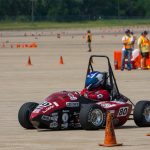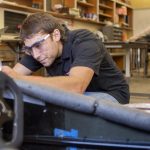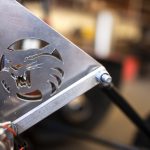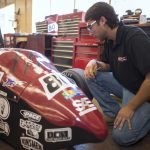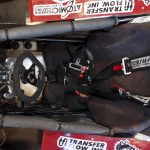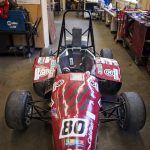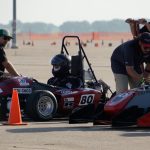The Fast and the Fuel-Efficient
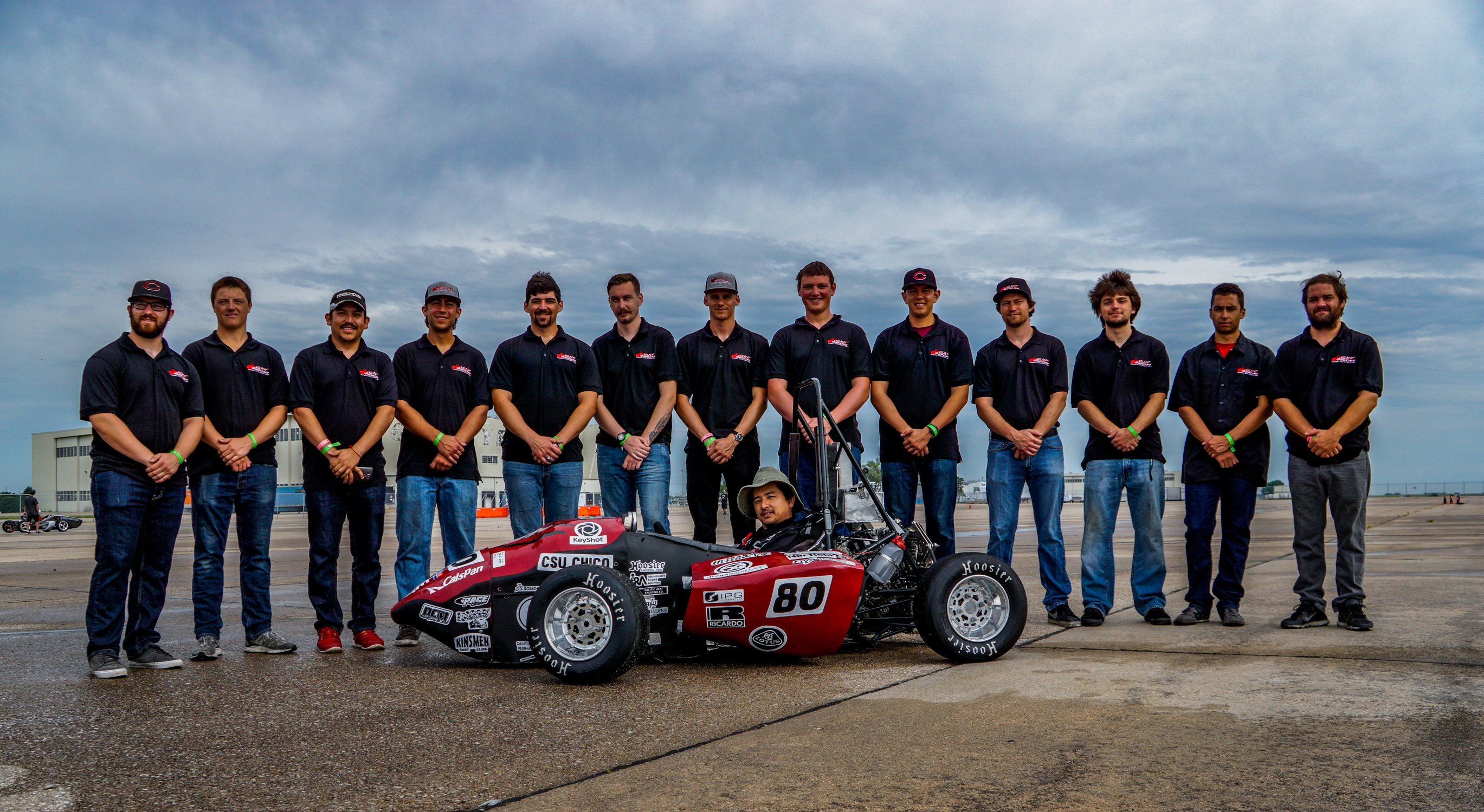
Working in the Plumas Hall machine shop without air conditioning can be a bit stifling in summer, but the heat is on for the Society of Automotive Engineers team.
After winning second place in fuel efficiency at the Formula SAE international competition and ninth place in endurance earlier this summer, Chico State’s student team is already working to edge past the competition in 2017. Among more than 80 entrants, the team placed 13th overall and its members now want to get faster, more fuel efficient, and full of force.
“The first year we had issues just keeping our wheels on the car. This year, we actually had something competitive where we were passing teams and actually racing,” said Spencer Johnson, (BS, Mechatronic Engineering, ’16). “I’m excited to see what the guys come up with for next year.”
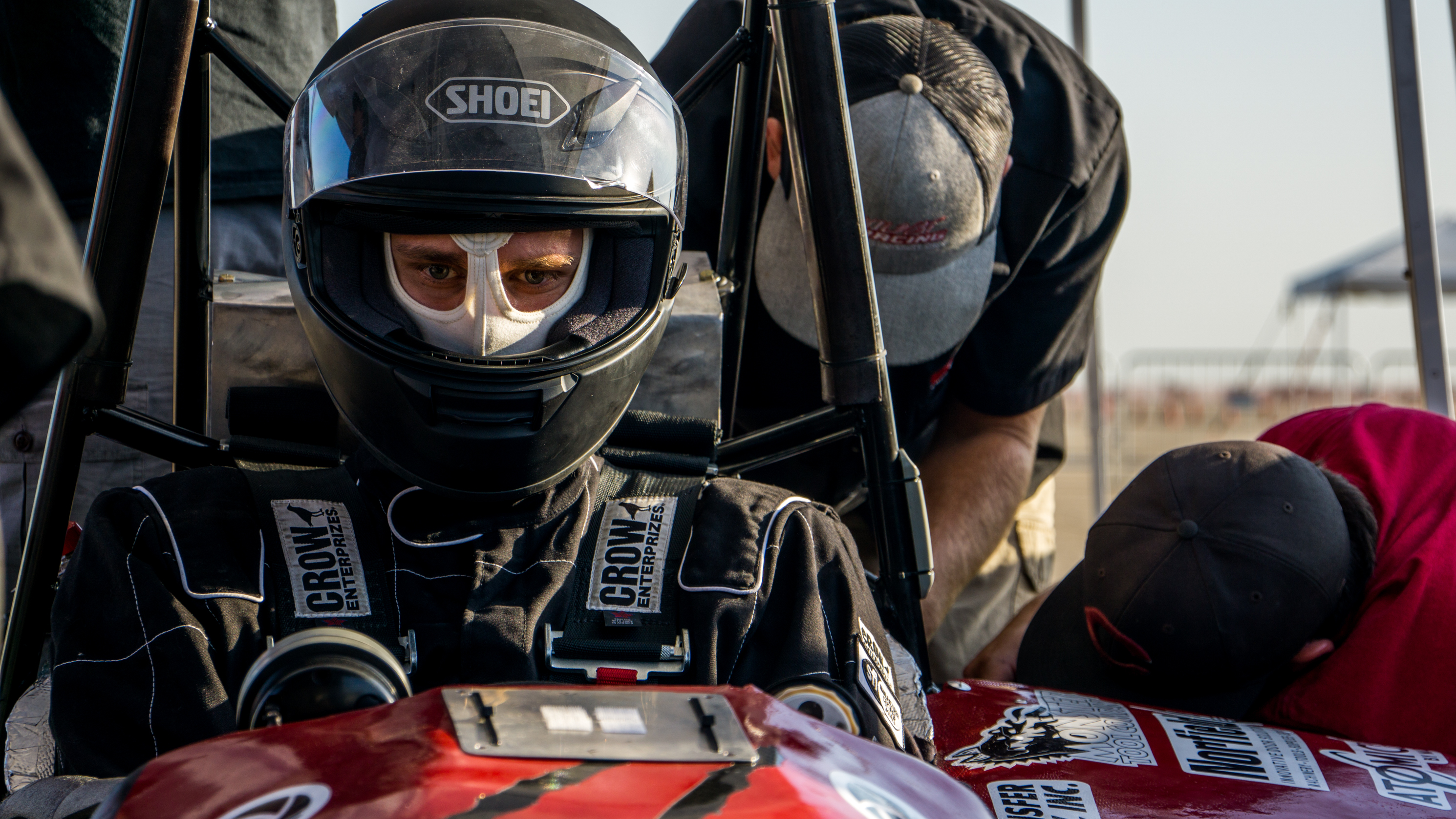
Originally known as “Mini Indy,” in homage to the famed Indianapolis 500 auto race, Formula SAE is an international collegiate design competition that started in 1979 and is now one of the largest student engineering competitions. The objective is to help students apply classroom engineering principles to real-world work experience.
To that extent, they must design, build and test a Formula-style race car that can withstand significant acceleration and rapid braking. To evaluate their car’s production viability, they must also submit a comprehensive design report.
“Taking an idea from paper to a part you can hold in your hand and then working with others to form an assembly, it’s quite an experience and at competition, you are full of emotions,” Johnson said. “It’s something every engineering student should do whether they like cars or not. You learn a lot and make a lot of friends.”
This year’s competition in Nebraska was not without challenges.
The team was plagued by damaged parts and a dead fuel pump that required last-minute engineering creativity. When the 13 students and faculty advisor Daisuke Aoyagi arrived at the competition, they had only five hours of drive time under their belts.
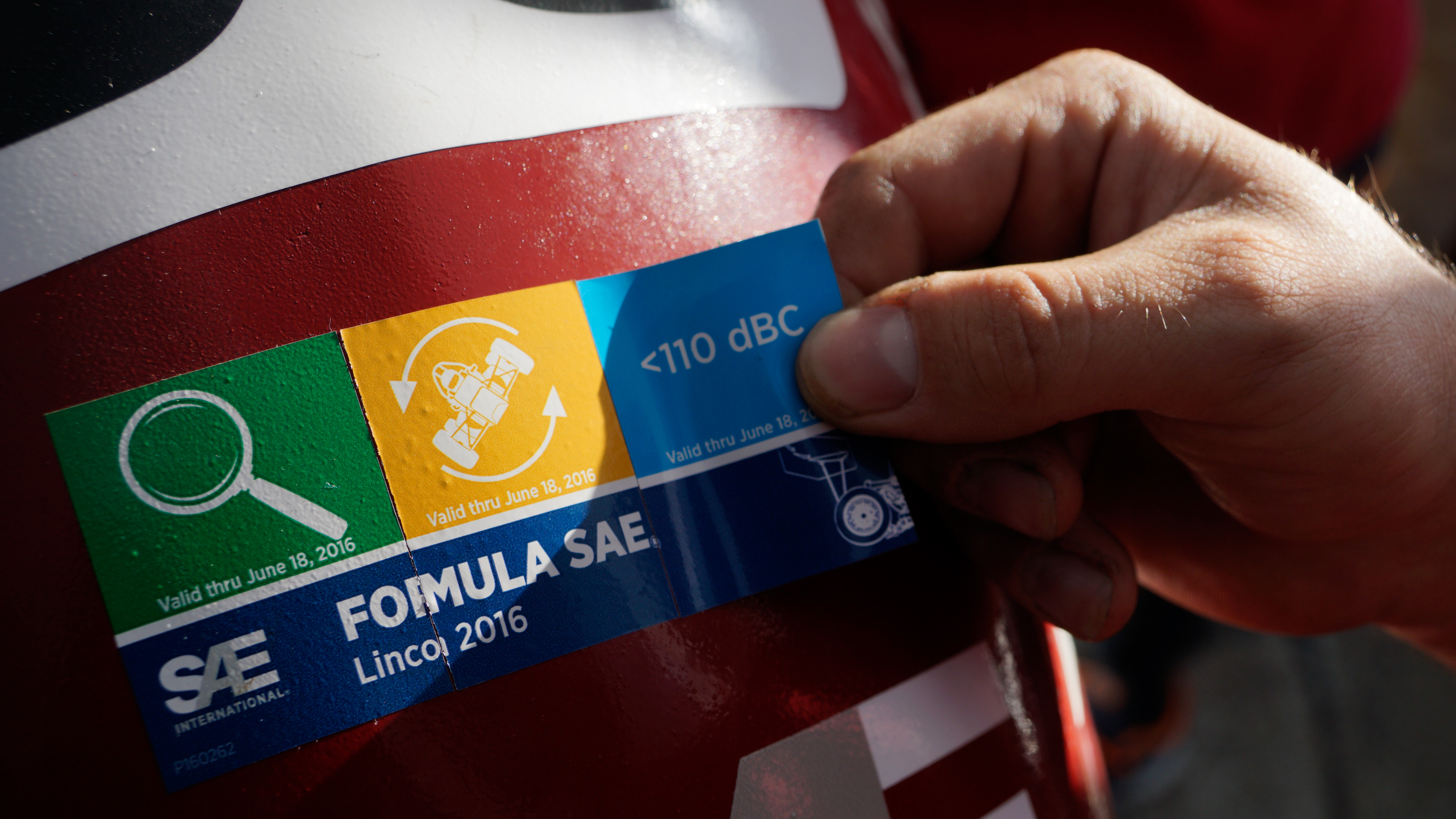
With a few hiccups, they passed all critical areas of testing—the technical and safety inspection, tilts to 45 and 60 degrees, noise levels, and braking.
Dominic DeMartini, a transfer student majoring in mechanical engineering, represented well. He placed 26th in skidpad, which isolates the lateral acceleration of the car, and 42nd in acceleration.
Johnson and senior Sam Rabellino placed 28th in the autocross event, navigating a cone course at the Lincoln Airpark. On the final day of competition, they were the 31st car to start the endurance race and immediately set the fastest time on the track with a top speed of about 55 mph.
The thrill and adrenaline rush is hard to explain, said Rabellino, also a mechatronic engineering major and the team’s outgoing president.
“I did seven laps and passed a few cars and the car was running well. I pulled into the driver change and jumped out and Spencer jumped in … We were all really nervous,” Rabellino said. “Watching Spencer race and him passing a few cars, that was my favorite moment of the whole three years.”
Mechanical engineering major Blake Alfonso, the team’s incoming president, was also pleased with the team’s performance, considering Chico State students were up against engineering students from around the world—some of whom come from schools that have $60,000-$80,000 budgets for their Formula cars. The Chico State team’s budget of less than $25,000 had to cover travel costs and $2,200 contest entry fees. Instructionally Related Activities funding provided most of the budget, with additional support by major sponsors including Transfer Flow, Pettersen Motorsports, Norfield Industries, Dragon Graphics and Atomic Powder Coating.
Stickers from those supporters, as well as countless additional sponsors, decorate most of the red racer, complete with claw marks across the hood and Wildcat stencils flaring behind the driver’s seat. But image isn’t everything.
When pushed to the limit in the 15-lap endurance test, it’s not uncommon for some cars to literally come apart at the seams or grind to a halt. Of the 80-plus entrants—some of which look like they belong on the Indy 500 track—only 22 finished, with Chico State’s humble creation among them.
“We have a very simple car. It’s as bare bones as it can get,” Johnson said. “Everyone has heard the saying ‘KISS: Keep it simple, stupid.’ It goes to show you can do really well with a simple car as long as it’s well thought-out and reliable.”
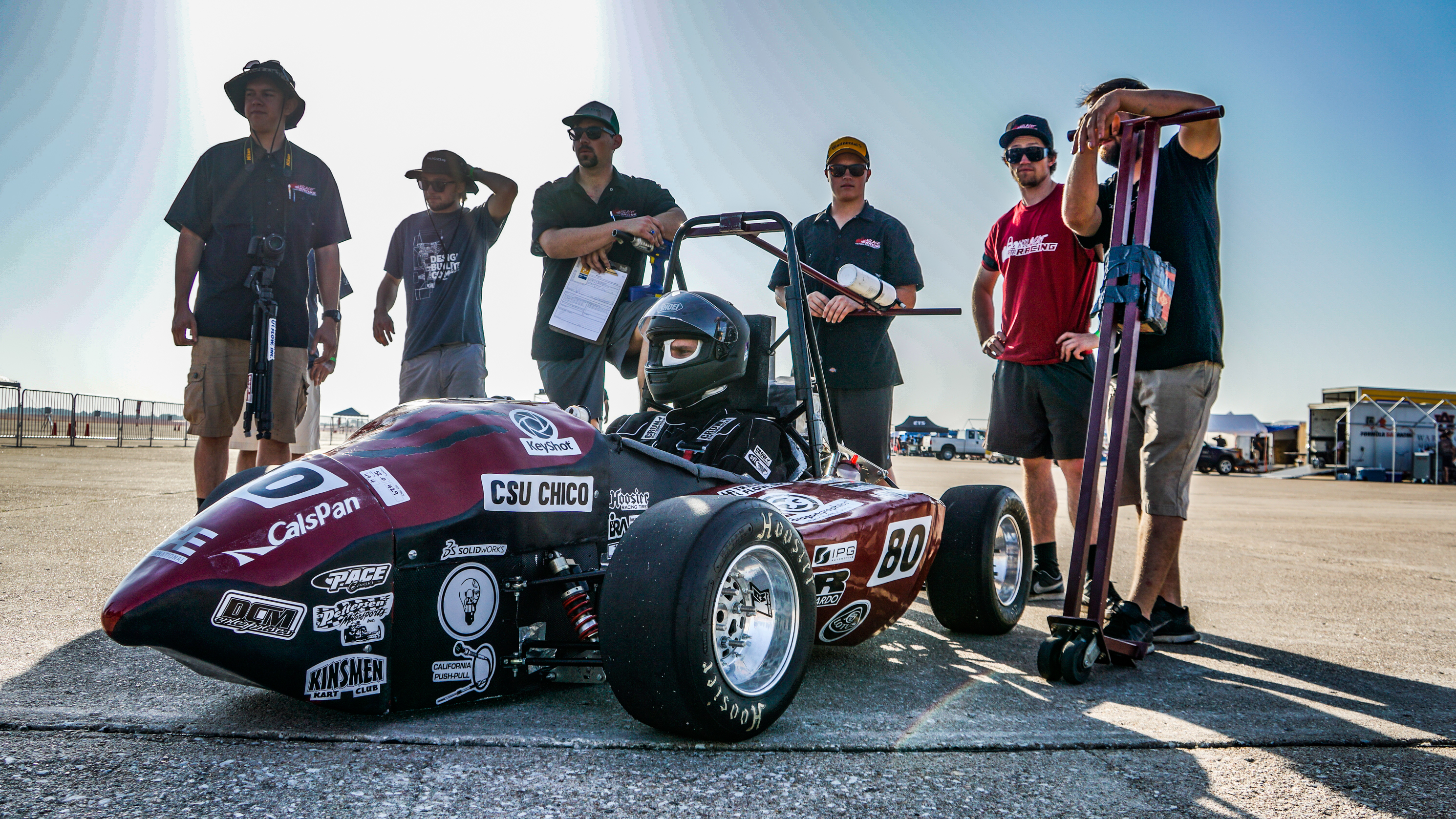
This year’s car sported smaller wheels, a more compact engine, and a sleeker frame, weighing in at just 429 pounds. Facing failures with their fuel-injected engine, the students switched to a converted dirt bike engine and raced the only car in the competition with a carburetor and a gravity-fed fuel tank.
“Our major was made for cars,” Alfonso said of the students’ ingenuity. “Everything we learn in class can be applied to cars.”
And with an on-campus machine shop, Chico State students can make most of their own parts, a luxury not all schools have. Getting that experience boosts their job prospects, he said, since “employers love that you know what it takes to make the parts.”
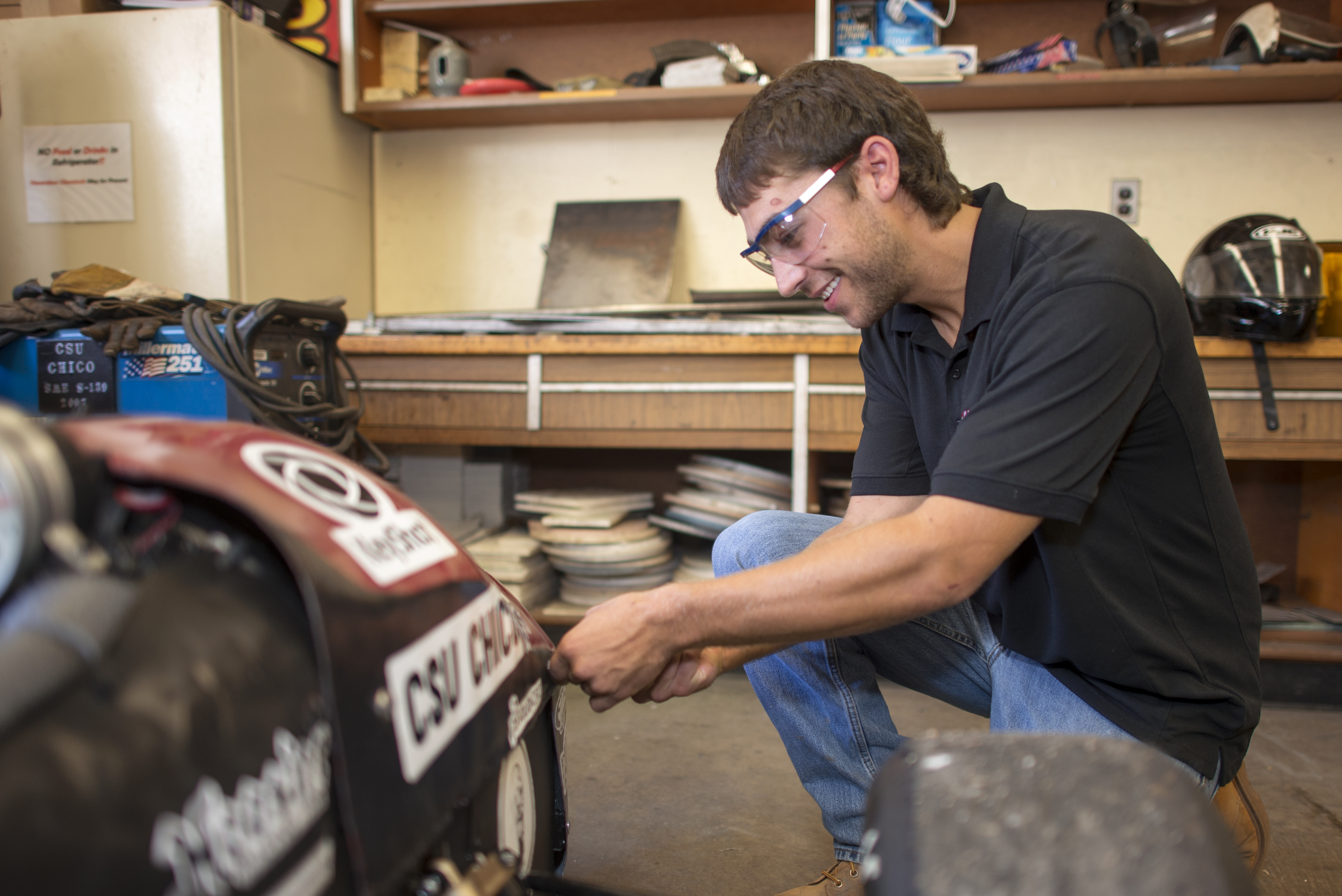
(Jessica Bartlett/Student Photographer)
After graduation, Alfonso hopes to manufacture some auto parts for his dad’s auto shop business and eventually build a true racecar himself.
“Cars are my passion. That’s how all of us are in here,” he said. “Some have never picked up a wrench before in their lives, but we came to engineering because of cars.”
During the fall, the team plans to meet weekly to refine and model their design concepts. Over winter break, they’ll build the car, and with luck, they’ll have all of spring to test and improve it before taking to the 2017 international competition.
“If we get an engine that gets some more power and drop some weight off the car, we will have a solid team,” Rabellino said. “We just need to keep up our consistency of reliability.”



